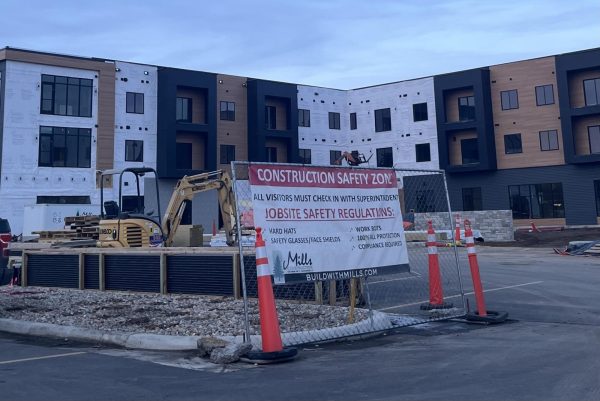Credit Report Basics
October 8, 2003
Char Telkamp
Part 2 of 2. This week we’ll look at how to remove negative incorrect information. Last week, we looked at the importance of knowing and understanding what’s in your credit report.
Before you can demand your legal rights, you must thoroughly know your legal rights. These are contained in the four sections of the Consumer Protection Act. The Fair Credit Reporting Act (FCRA) is primarily concerned with credit bureaus and credit reports. The intent of the FCRA is twofold:
1.To protect you against credit abuses.
2.To provide you with the legal tools to repair and improve your credit.
What can you do if your credit report contains false, misleading or incomplete information that now injures your credit?
The Fair Credit Reporting Act (FCRA) protects you against credit abuse that might result from an unfair summary of your credit history. The FCRA grants you certain rights as a credit consumer. These basic rights are the keys to eliminating negative marks in your credit report and to reestablishing good credit.
Challenge the accuracy of your report.
You have the right to dispute any information in your report that you feel is false, obsolete, incomplete, or incorrectly entered. By disputing an entry, you are challenging the accuracy of what is reported on your credit statement and you neither admit nor deny your liability for the debt.
The law clearly defines the length of time negative information can remain on your credit report; older information is considered obsolete and must be removed. For example, a bankruptcy or an unpaid IRS tax lien will remain on your report for 10 years. Generally, most other types of information are considered obsolete after 7 years.
The credit bureau must verify any information challenged. Credit bureaus are only considered reporting agencies; they need not prove the accuracy of the information – unless it’s challenged.
Once an individual challenges the information, the credit bureau must contact the creditor and request that the creditor verify the information exactly as it appears on the credit bureau report.
Unfortunately, any person or company – whether a legitimate creditor or not – can include negative information on your credit report without your consent or knowledge – and without the need to first prove it is true.
The credit bureau must provide proof of the entry within 30 days, unless there is some good reason for delay, such as an overload of inquiries to the bureau.
Any information that cannot be verified must promptly be deleted from the credit bureau files.
In this way, the burden of proof goes back to the original creditor. And, the information needed for a creditor to verify is rarely easily accessed. Old files will need to be found and checked for accuracy and completeness. The creditor must then respond to the credit bureau within the 30-day time limit to present proof of the adverse information, which is usually too difficult for most creditors to do within the required time. In essence, many negative remarks are deleted through creditor default!
If the original creditor verifies the information within the time limit, the negative marks must remain in your file.
Challenge the Negative/Non-Rated Remarks
Successful credit repair requires everything to be in writing. When disputing items, never waste time communicating with a credit bureau either by telephone or in person, mainly because your communication must state certain information.
Send a letter for each item you want to challenge. Send a protest letter only if you feel the negative or non-rated summary is incorrect due to problems with the creditor, is factually incorrect, or was due to circumstances beyond your control.
If you find the code “charge-off,” the creditor thinks your debt is uncollectible. Protest that this comment should be removed if the debt was satisfied; it should not be reported as a charge-off. If there were a series of “past dues”, perhaps those payments were delayed when you changed addresses.
You may also dispute owing the creditor the amount claimed as delinquent or charged-off. Were you billed for unsatisfactory goods or services when the creditor failed to resolve the problem to your satisfaction? Did you in turn delay your payment? There are many possible reasons you may have for disputing a negative credit mark.
When you write your letter of dispute to the credit bureau, carefully list each negative or non-rated notation you want to challenge and then draft one letter.
Using a separate letter for each dispute may cause the credit bureau to consider your requests as “frivolous and irrelevant”. They will then be able to legally ignore your request for an investigation.
Use only general reasons for your dispute. Avoid specific reasons, such as incorrect dollar amounts or dates. Your dispute should only state that you never owed that creditor $2,000. You are not obligated to mention what you do owe.
For a disputed date, simply claim that you never incurred that debt on that date. If you fully paid the debt, say so, but don’t say when it was satisfied. Do not give the credit bureau more negative information to add to your report.
Never send a form letter to the credit bureau. In essence, a handwritten letter starts the process more effectively. Include a copy of your credit report to ensure the bureau checks the right file.
Be sure to sign, date and include your address, date of birth and social security number in the letter. Copy your letter for your file. Send your letter certified mail, return receipt requested. This proves when the bureau received it.
Remember, a credit bureau cannot by itself, verify credit information. It must rely on the creditor to defend against your dispute. Only in this way can the negative mark be verified and allowed to remain on your credit report.
Wait 30 days for a reply.
If the credit bureau does not reply within 30 days, send a second letter demanding an immediate response to your initial request. The credit bureau should ultimately respond in one of three ways:
1.The credit entries are changed.
The notations will be changed/removed because either the credit bureau verified that the notation(s) were in error, or the creditor failed to verify the disputed credit entry. The credit bureau is now required to reply to you within 30 days that the disputed credit entry will be deleted.
2.The creditor verifies the disputed item, so it stays on your credit record.
The credit bureau’s reply to you will contain the creditor’s statement and/or documentation to verify the negative credit information.
This does not mean there is nothing further you can do to correct your credit report. You then have other options:
a.Try again later. Challenge the negative item in a year or two, but then raise a different dispute.
b.Talk to the creditor directly.
Most creditors are reasonable. Attempt to persuade your creditor that your claim is legitimate and the creditor can have the credit bureau correct your credit report. This commonly occurs.
3.You receive a preliminary response from the creditor.
The credit bureau may first respond with a preliminary letter that acknowledges receipt of your letter and advises you that the bureau is continuing its investigation.
If the credit bureau sends preliminary responses to request additional information such as canceled checks or evidence that a tax lien or judgment has been satisfied, you should respond quickly to the request.
If the credit bureau asks you to verify your identity, send them a current phone or utility bill with account information they are already likely to have in their computer.
Never send a copy of your driver’s license, social security card or identification that reveals your place of employment.
If you do not receive a final reply from the credit bureau within 30 days, then the negative credit information against you must be removed.
You will probably not get results on every challenge the first time, but you can try again later with a different dispute.
You will notice that the bureau has probably deleted some negative items only because one or more creditors failed to respond to the investigation within 30 days. If you still have negative marks, repeat this process.
Bad credit cannot be repaired in a day; it takes diligence.





















